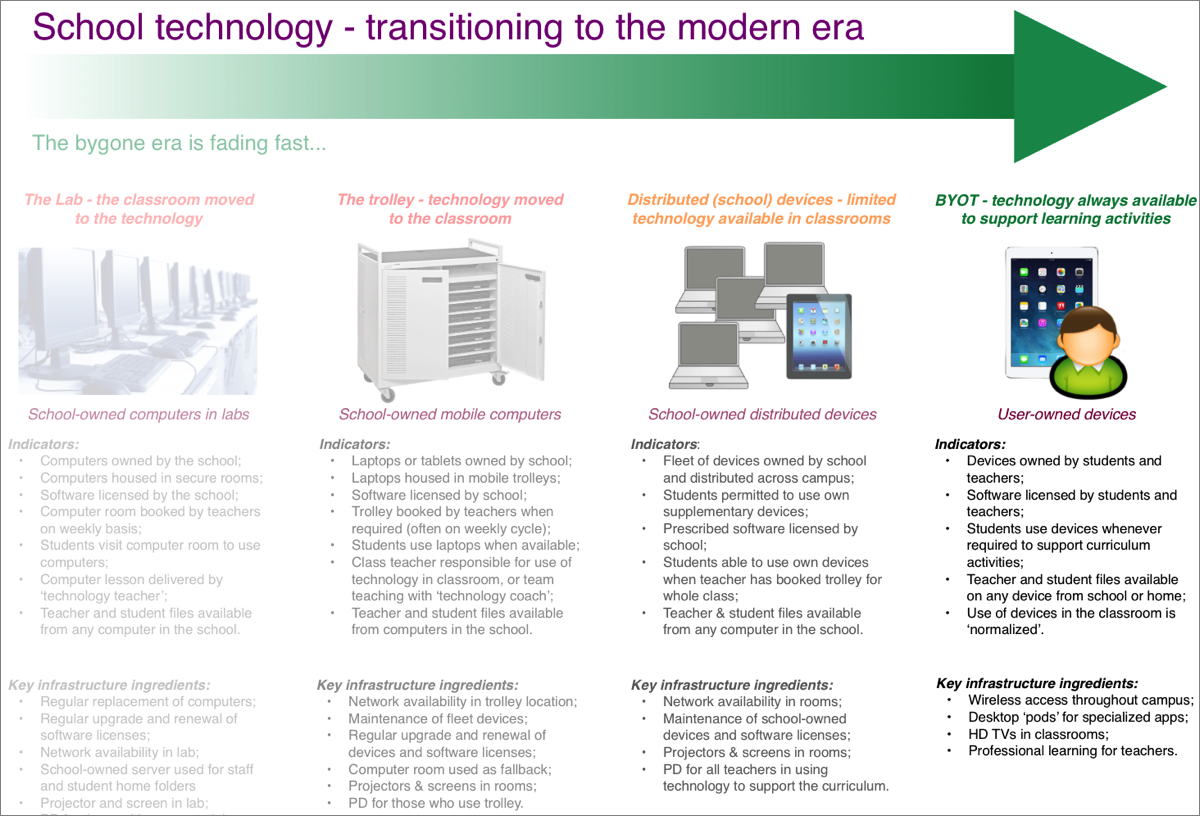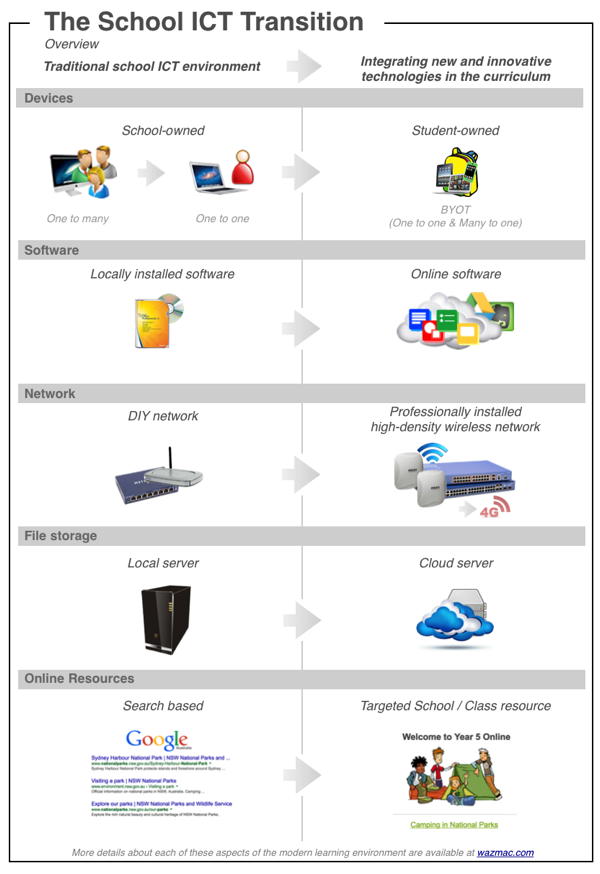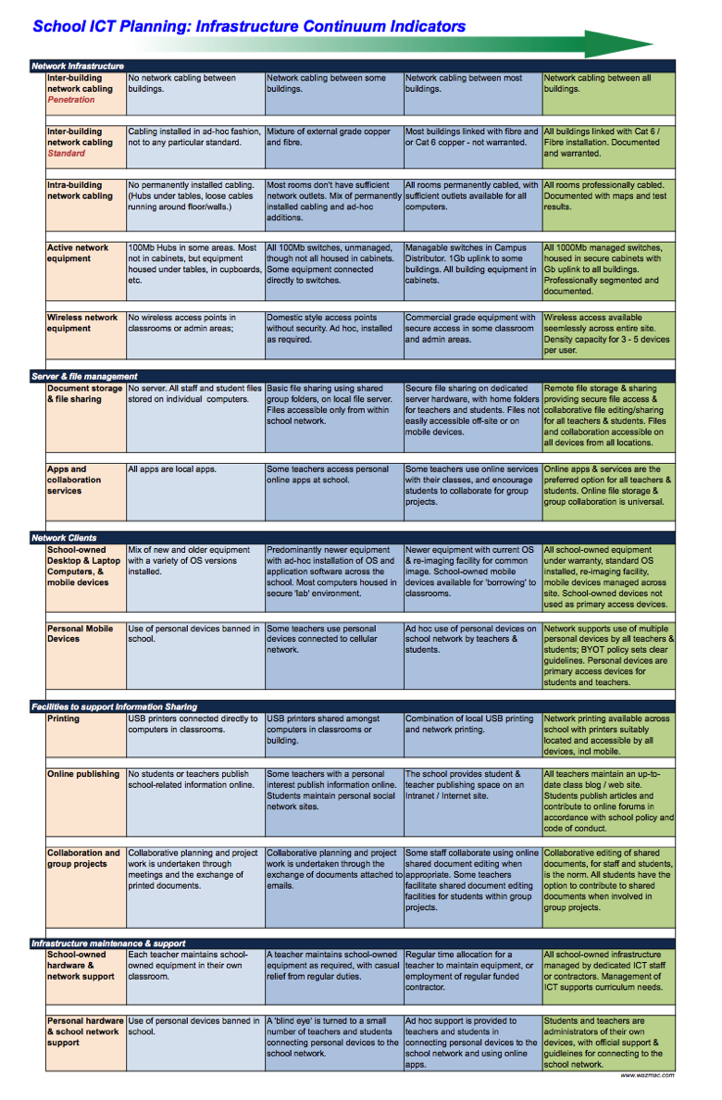 A key goal of teachers using technology to support the curriculum has always been the integration of new and innovative technologies – the normalisation or transparent integration of these technologies – in day-to-day classroom activities.
A key goal of teachers using technology to support the curriculum has always been the integration of new and innovative technologies – the normalisation or transparent integration of these technologies – in day-to-day classroom activities.
Unfortunately, the cost of new technologies has always created significant hurdles to be negotiated in achieving this goal. Minimising costs, and safe-guarding school assets, often resulted in the concentration of school-owned technologies in computer rooms, or ‘labs’.
When ‘technology access’ for students involves trekking to a secure room in another building in the school – accessible once a week through a booking roster – the chance of new and innovative practices becoming ‘normalised’ in regular classroom activities is virtually zero. ‘Technology’ becomes it’s own subject.
The broad adoption of mobile electronic devices in the wider community has changed the options for schools. Not too many years ago many families owned just one desktop computer, which was shared between family members.
 Now, more often than not, every family member has their own mobile device, each with significantly more computing power than the previous generation of their desk-bound predecessors.
Now, more often than not, every family member has their own mobile device, each with significantly more computing power than the previous generation of their desk-bound predecessors.
Progressively, schools are moving from a deployment model where desktop computers were located in secure computer rooms, to the widespread use of mobile devices – available when and where they are required – to support learning activities.
While the capabilities of new devices continue to leapfrog previous technological incarnations, entry costs for these new technologies tend to remain relatively static, and can still be prohibitive for mass-purchasing and deployment in K-12 schools. If these purchases were a one-off cost it might be manageable – however, as a recurring cost it becomes unsustainable for most schools.
Consequently, savvy schools are leveraging device ownership in the community to integrate new technologies in their classrooms – welcome to the era of Bring your Own Technologies (BYOT).
 Rather than spending limited school funds on computers and software licenses, both of which need to be renewed every few years, clever schools are now transitioning their technology budgets to focus on the deployment of longer-lasting infrastructure that can support student- and teacher-owned devices, leaving the cost of device renewal and software licensing to the owners of the devices.
Rather than spending limited school funds on computers and software licenses, both of which need to be renewed every few years, clever schools are now transitioning their technology budgets to focus on the deployment of longer-lasting infrastructure that can support student- and teacher-owned devices, leaving the cost of device renewal and software licensing to the owners of the devices.
The key technology planning considerations for schools in the modern BYOT era are:
- providing a solid and reliable wireless network infrastructure;
- preferring file formats and file storage services that provide for multi-device, multi-location access;
- developing collaborative file sharing facilities and protocols;
- creating meaningful and relevant online learning resources;
- (most importantly) developing relevant and engaging teacher professional learning to support the application of this infrastructure in a curriculum context.
Where does your school’s technology infrastructure sit on the transition continuum?
Are you moving from a model where school-owned technologies are locked in remote computer rooms, to the integrated use of personal devices supporting learning activities in classrooms?
The documents below may be useful in guiding planning discussions in your school.


